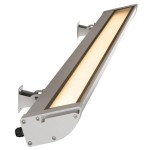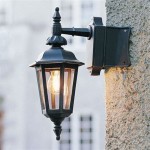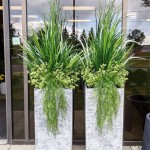How To Keep Outdoor Furniture Cushions Clean
Outdoor furniture cushions provide comfort and style to patios, decks, and other outdoor living spaces. However, being exposed to the elements makes them vulnerable to dirt, stains, mildew, and fading. Regular cleaning and proper maintenance are crucial for preserving the appearance and extending the lifespan of these cushions. This article outlines effective strategies for keeping outdoor furniture cushions clean and well-maintained.
Understanding Cushion Materials and Construction
Before embarking on any cleaning regimen, it is essential to understand the composition of the cushion fabric and its construction. Outdoor cushions are typically made from durable, weather-resistant materials such as acrylic, polyester, olefin, or solution-dyed acrylic. These fabrics are chosen for their ability to withstand sun exposure, moisture, and general wear and tear. However, knowing the specific fabric type is crucial because different materials may require distinct cleaning methods.
The construction of the cushion also plays a role in determining the appropriate cleaning approach. Cushions may have removable covers, allowing for separate washing. Others may be sewn directly onto the cushion foam, requiring spot cleaning or more delicate cleaning techniques. Examining the cushion closely and checking for any attached care labels is always the first step.
Care labels generally provide specific instructions regarding washing temperatures, detergent usage, and drying methods. Adhering to these recommendations will prevent damage to the fabric and ensure the cushion remains in optimal condition. Failure to heed these instructions could result in shrinkage, discoloration, or other undesirable consequences.
Establishing a Regular Cleaning Routine
Preventative maintenance is the most effective approach to keeping outdoor furniture cushions clean. A regular cleaning routine, performed consistently, minimizes the accumulation of dirt and debris, reducing the need for more intensive cleaning later on. This routine should include several key practices.
Firstly, cushions should be brushed or vacuumed regularly, at least once a week, to remove loose dirt, leaves, and other debris. A soft-bristled brush or a vacuum cleaner with an upholstery attachment can be used for this purpose. Removing these materials before they become embedded in the fabric will significantly reduce the likelihood of stains and discoloration.
Secondly, spills should be addressed immediately. The longer a spill remains on the cushion, the greater the chance it will stain. Blot the spill with a clean, absorbent cloth, working from the outside inward to prevent spreading. Avoid rubbing, as this can drive the stain deeper into the fibers.
Thirdly, cushions should be rotated regularly to ensure even wear and tear. This prevents one side of the cushion from being exposed to excessive sunlight or moisture, which can lead to uneven fading or mildew growth. Rotating cushions also helps distribute the stress on the fabric, prolonging its lifespan.
Finally, consider using protective covers when the furniture is not in use, especially during periods of heavy rain, snow, or prolonged sun exposure. These covers shield the cushions from the elements, minimizing the risk of damage and reducing the frequency of required cleanings. Choose covers made from breathable, water-resistant materials to prevent moisture buildup and mildew growth underneath.
Effective Cleaning Methods for Outdoor Cushions
Despite regular preventative maintenance, outdoor cushions will inevitably require more thorough cleaning from time to time. The appropriate cleaning method will depend on the severity of the dirt and stains, as well as the type of fabric.
For light cleaning, a simple solution of mild soap and water can be effective. Mix a small amount of gentle dish soap or laundry detergent with lukewarm water. Use a soft cloth or sponge to apply the solution to the cushion, working in a circular motion. Be careful not to saturate the cushion too much, as excessive moisture can lead to mildew growth. Rinse the cushion thoroughly with clean water and allow it to air dry completely before using it again.
For more stubborn stains, a specialized fabric cleaner may be necessary. Choose a cleaner specifically designed for outdoor fabrics and test it in an inconspicuous area first to ensure it does not cause discoloration or damage. Follow the manufacturer's instructions carefully when applying the cleaner. Some cleaners may require a dwell time before rinsing, while others may need to be agitated with a brush.
Mold and mildew are common problems for outdoor cushions, especially in humid environments. To remove mold and mildew, mix a solution of one part bleach to ten parts water. Apply the solution to the affected areas and let it sit for a few minutes. Scrub gently with a soft brush and rinse thoroughly with clean water. It is crucial to wear gloves and eye protection when working with bleach, and to perform this cleaning in a well-ventilated area. Always test the bleach solution on a hidden area of the cushion first to ensure it does not cause discoloration.
For cushions with removable covers, machine washing may be an option. Check the care label to determine the appropriate washing temperature and detergent usage. Use a gentle cycle and a mild detergent. Avoid using fabric softener, as it can leave a residue that attracts dirt. After washing, tumble dry the covers on low heat or allow them to air dry. Ensure the covers are completely dry before replacing them on the cushions to prevent mildew growth.
If the cushions are heavily soiled or stained, professional cleaning may be required. Professional cleaners have access to specialized equipment and cleaning solutions that can effectively remove dirt and stains without damaging the fabric. This option is particularly beneficial for delicate fabrics or cushions that are difficult to clean at home.
Protecting Cushions from the Elements
In addition to cleaning, protecting outdoor furniture cushions from the elements is crucial for extending their lifespan and maintaining their appearance. Several strategies can be employed to minimize the impact of sun, rain, and other environmental factors.
Sun exposure is a major cause of fading and discoloration in outdoor fabrics. To minimize sun damage, position furniture in shaded areas whenever possible. Use umbrellas, awnings, or other forms of shade to protect the cushions from direct sunlight. When the furniture is not in use, cover the cushions with protective covers to shield them from the sun's rays.
Moisture is another significant threat to outdoor cushions. Rain, humidity, and spills can all lead to mildew growth and fabric deterioration. To protect cushions from moisture, choose cushions made from water-resistant or water-repellent fabrics. Apply a fabric protector spray to enhance the water resistance of the fabric. Store cushions in a dry place when not in use, especially during periods of heavy rain or snow. If cushions do get wet, allow them to air dry completely before storing them away.
Wind can also be a factor in the wear and tear of outdoor cushions. Strong winds can blow cushions off furniture, causing them to become soiled or damaged. To prevent this, secure cushions to the furniture using ties or straps. Alternatively, store cushions indoors or in a sheltered area when strong winds are expected. Weighting the cushions down with heavy objects can also help prevent them from blowing away.
Finally, consider the placement of outdoor furniture cushions in relation to other outdoor elements. Avoid placing cushions near trees that drop sap or debris, or near areas where birds are likely to congregate. These elements can cause stains and require more frequent cleaning.
Addressing Specific Stains and Issues
Specific types of stains and issues may require specialized cleaning techniques. Understanding how to address these problems effectively can help preserve the appearance of outdoor furniture cushions.
For oil-based stains, such as sunscreen or food grease, apply a dry-cleaning solvent or a degreasing agent to the affected area. Blot the stain with a clean cloth, working from the outside inward. Allow the solvent to sit for a few minutes before rinsing with clean water. Repeat the process if necessary. Alternatively, sprinkle the stain with baking soda or cornstarch to absorb the oil, and then vacuum it up after a few hours.
For tannin stains, such as coffee or tea, mix a solution of vinegar and water. Apply the solution to the stain and let it sit for a few minutes. Blot the stain with a clean cloth and rinse with clean water. Repeat the process if necessary. Alternatively, use a commercial stain remover specifically designed for tannin stains.
For blood stains, rinse the affected area with cold water immediately. Avoid using hot water, as it can set the stain. Apply a solution of hydrogen peroxide to the stain and let it sit for a few minutes. Blot the stain with a clean cloth and rinse with cold water. Repeat the process if necessary. If the stain persists, use a commercial stain remover specifically designed for blood stains.
For chewing gum, freeze the gum with an ice pack until it becomes brittle. Then, gently scrape it off the fabric with a dull knife or spatula. Remove any remaining residue with a dry-cleaning solvent.
For pet stains, clean the affected area with an enzymatic cleaner that is specifically designed to remove pet odors and stains. Follow the manufacturer's instructions carefully. These cleaners contain enzymes that break down the organic compounds in the stain, effectively removing the odor and preventing repeat offenses.
Maintaining Cushion Foam and Filling
While cleaning the fabric cover is important, maintaining the cushion foam and filling is equally crucial for preserving the comfort and support of outdoor furniture cushions. Moisture can penetrate the fabric and seep into the foam, leading to mildew growth and deterioration.
To prevent moisture from accumulating in the foam, choose cushions with open-cell foam or reticulated foam, which allows air to circulate freely. This type of foam dries quickly and is less susceptible to mildew growth. Consider using cushion liners made from waterproof or water-resistant materials to protect the foam from moisture.
If the cushion foam does become wet, remove it from the cover and allow it to air dry completely. Place the foam in a well-ventilated area and turn it periodically to ensure even drying. Avoid using heat to dry the foam, as this can damage it. If mildew is present, treat the foam with a mildew remover specifically designed for foam products.
Over time, cushion foam can lose its shape and support. To prolong the lifespan of the foam, fluff the cushions regularly to redistribute the filling. Rotate the cushions frequently to ensure even wear and tear. If the foam becomes compressed or deteriorated, consider replacing it with new foam to restore the comfort and support of the cushions.
In conclusion, by understanding cushion materials, establishing a regular cleaning routine, employing effective cleaning methods, protecting cushions from the elements, addressing specific stains, and maintaining the cushion foam and filling, one can successfully keep outdoor furniture cushions clean, comfortable, and aesthetically pleasing for years to come.

How To Clean Outdoor Cushions And Scentsible

How To Clean Patio Furniture And Scentsible

How To Clean Outdoor Cushions

How To Clean White Outdoor Cushions A Slice Of Style

Tips For Keeping Your Patio Furniture Clean And Fresh Reviewed

How To Clean White Outdoor Cushions A Slice Of Style

How To Remove Mildew Stains From Outdoor Cushions

How To Clean Outdoor Cushions And Remove Stains Bob Vila

How To Clean Outdoor Cushions

Tips For Keeping Your Patio Furniture Clean And Fresh Reviewed







